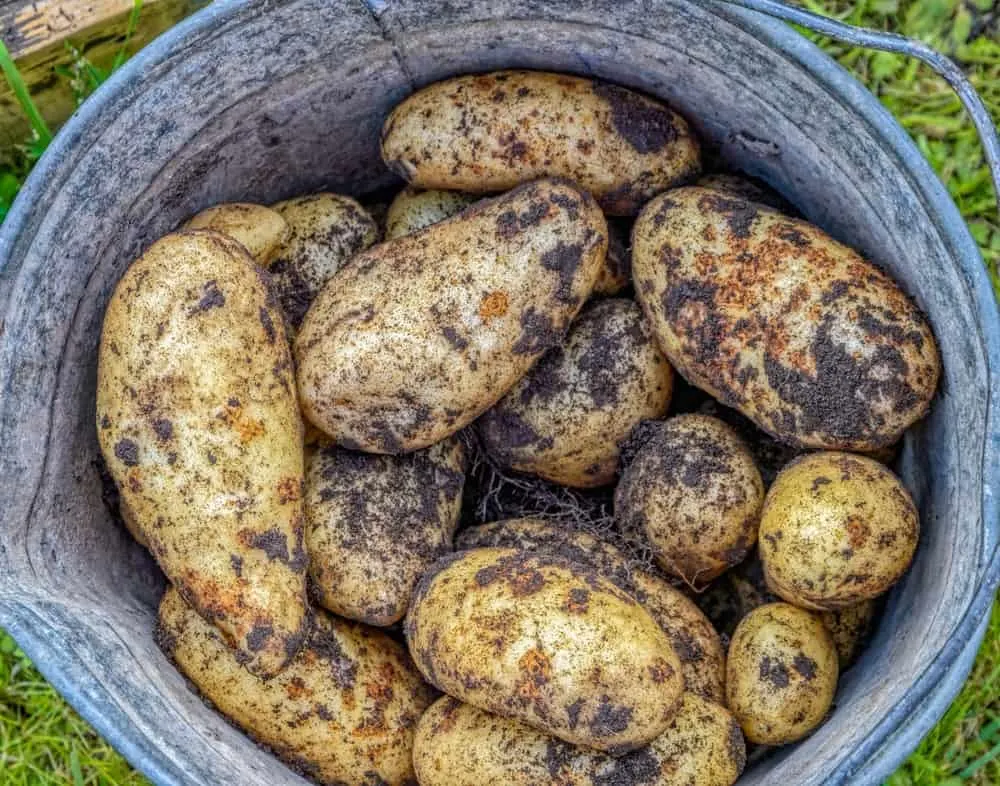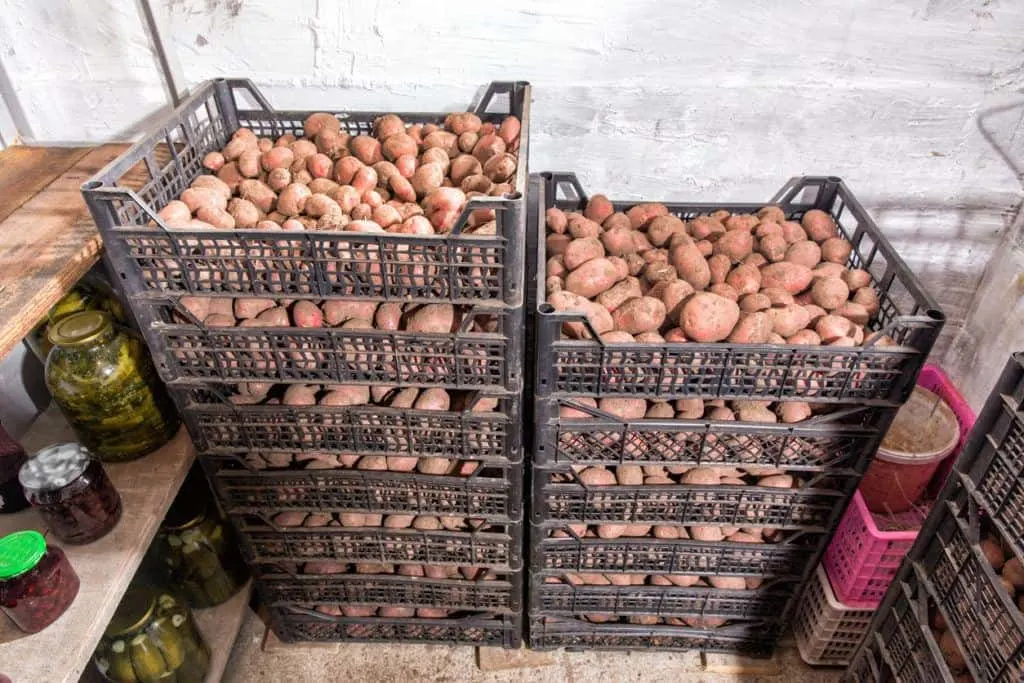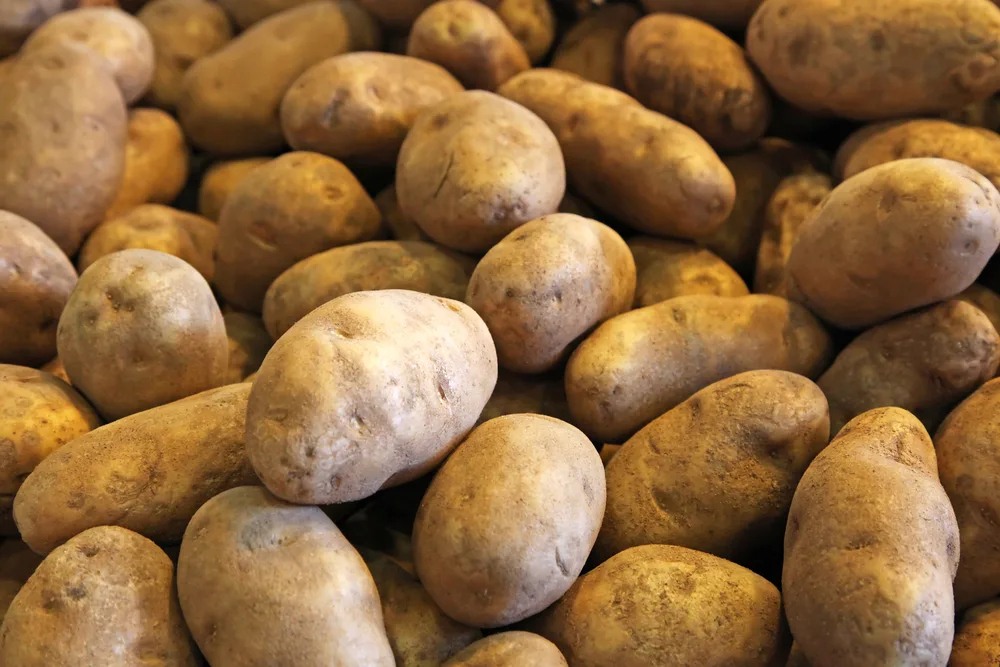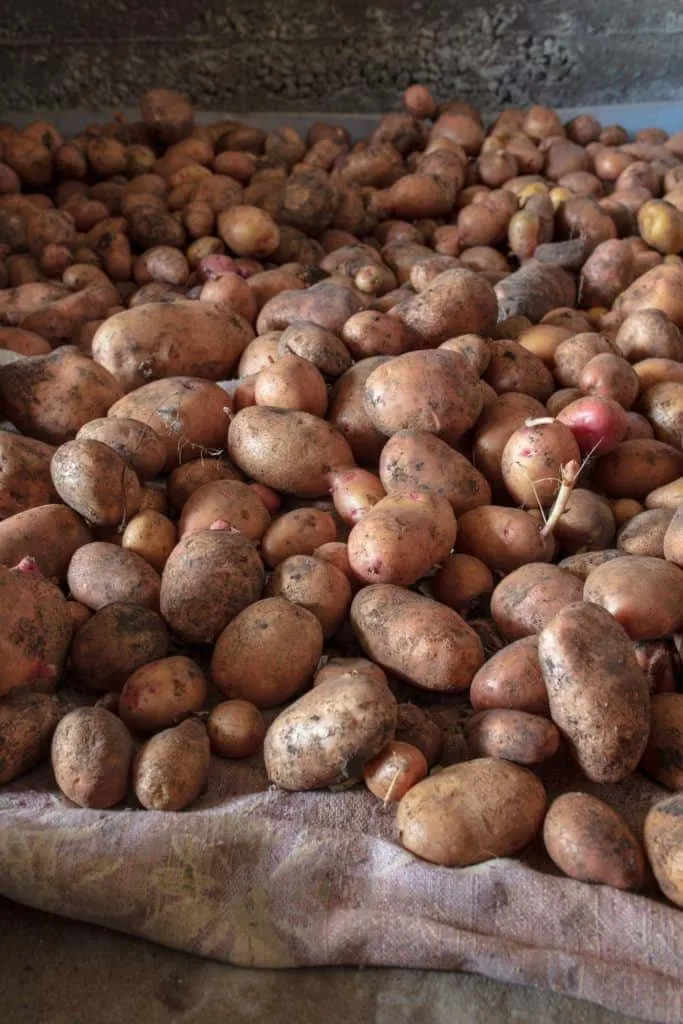
The hardest work of the gardening season is over, and you’re bringing in your potato harvest.
Or maybe you’ve visited your local farmers’ market and got a little carried away buying farm fresh potatoes.
Nights of home fries and mashed potatoes await, but let’s be real; there’s only so much potato you can eat at one time.
If you leave these spuds on the kitchen counter, they will quickly start to sprout, so a different solution is necessary if you want to savor your crop throughout the winter.
But here’s the good news.
Generations of homesteaders have perfected the art of how to store homegrown potatoes, and you can reap the rewards of their experiments today.
Keep reading to learn how you can preserve your harvest for maximum enjoyment over the months to come.
There’s more than one way to store a potato. Below are five options you can try out until you find what works best for you.
Option 1: Root Cellar Storage

The traditional method for storing potatoes is to put them in a cool, dark place where they aren’t at risk of freezing – like a root cellar.
If your home isn’t so well-equipped, an unheated garage or chilly corner in the basement can also work.
Simply tossing your potatoes into the cellar isn’t enough; you’ll need to prep them beforehand through a multi-day curing process.
How To Sort and Cure Fresh Potatoes
The first step after harvesting your potatoes is to sort through them to separate the ones best suited for storage.
Newly harvested potatoes lack the tough skin that protects them from rot, so take care while handling them not to cut through the skin or bruise them.
You want big potatoes without large puncture marks or blemishes, though small cuts can harden over during the curing process.
Any excessively damaged potatoes should be eaten within a few days or stored with another method.
Some potato varieties store better than others. You’ll have better luck with thick-skinned russets and other brown potatoes than delicate fingerlings and red-skinned varieties.

To prepare for curing, lightly rub some of the extra dirt off your chosen potatoes and set them on newspaper, not touching, in a dark space for up to two weeks.
This process hardens the skin so that the potatoes last longer in storage. While you might be tempted to wash them beforehand, potatoes store best if you leave them dry and dirty.
How to Store Cured Potatoes

Post curing, you can store your potatoes in any container that allows for ventilation, such as a cardboard box, paper bag, or laundry basket.